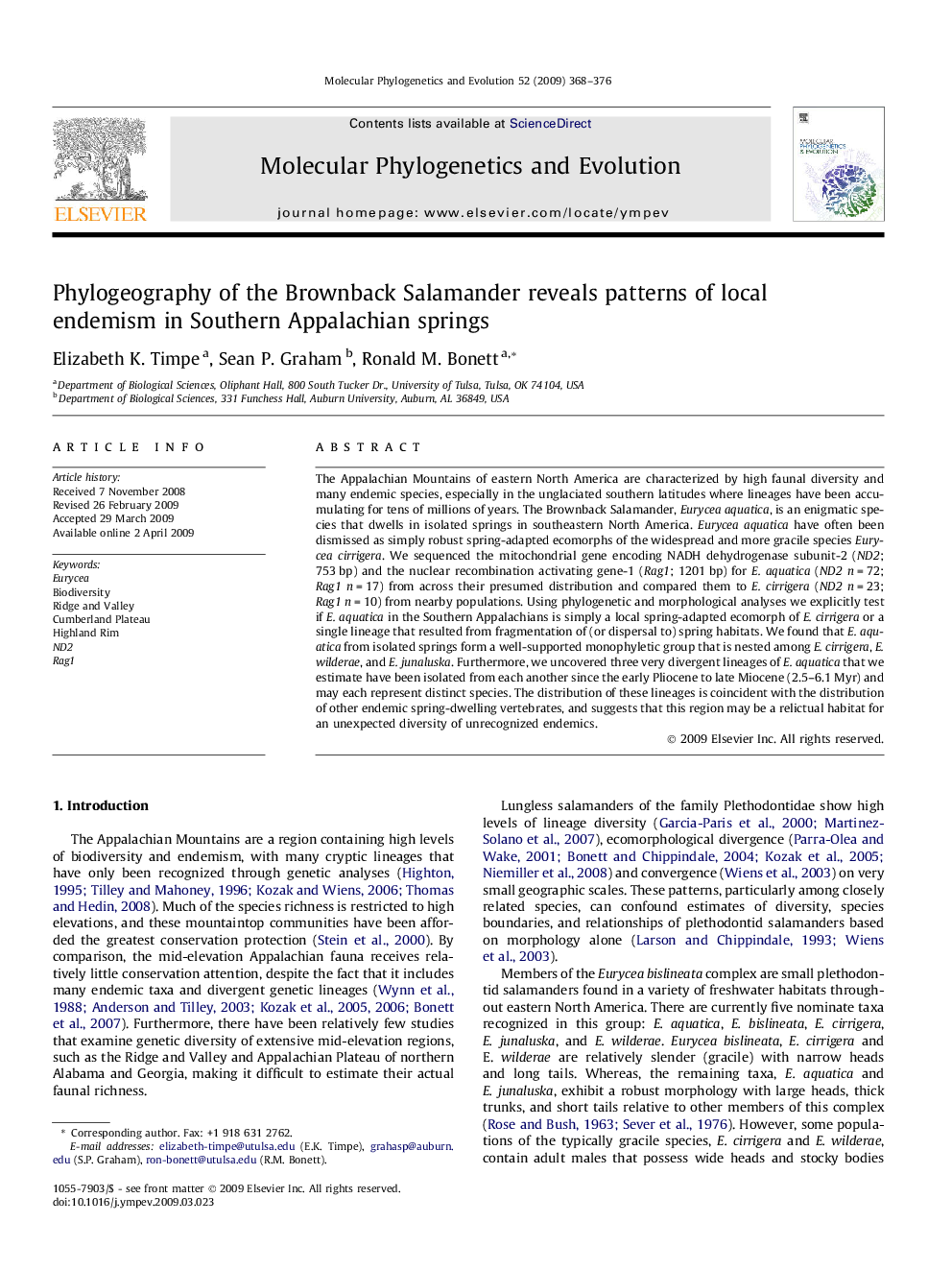| Article ID | Journal | Published Year | Pages | File Type |
|---|---|---|---|---|
| 2834396 | Molecular Phylogenetics and Evolution | 2009 | 9 Pages |
The Appalachian Mountains of eastern North America are characterized by high faunal diversity and many endemic species, especially in the unglaciated southern latitudes where lineages have been accumulating for tens of millions of years. The Brownback Salamander, Eurycea aquatica, is an enigmatic species that dwells in isolated springs in southeastern North America. Eurycea aquatica have often been dismissed as simply robust spring-adapted ecomorphs of the widespread and more gracile species Eurycea cirrigera. We sequenced the mitochondrial gene encoding NADH dehydrogenase subunit-2 (ND2; 753 bp) and the nuclear recombination activating gene-1 (Rag1; 1201 bp) for E. aquatica (ND2n = 72; Rag1n = 17) from across their presumed distribution and compared them to E. cirrigera (ND2n = 23; Rag1n = 10) from nearby populations. Using phylogenetic and morphological analyses we explicitly test if E. aquatica in the Southern Appalachians is simply a local spring-adapted ecomorph of E. cirrigera or a single lineage that resulted from fragmentation of (or dispersal to) spring habitats. We found that E. aquatica from isolated springs form a well-supported monophyletic group that is nested among E. cirrigera, E. wilderae, and E. junaluska. Furthermore, we uncovered three very divergent lineages of E. aquatica that we estimate have been isolated from each another since the early Pliocene to late Miocene (2.5–6.1 Myr) and may each represent distinct species. The distribution of these lineages is coincident with the distribution of other endemic spring-dwelling vertebrates, and suggests that this region may be a relictual habitat for an unexpected diversity of unrecognized endemics.
